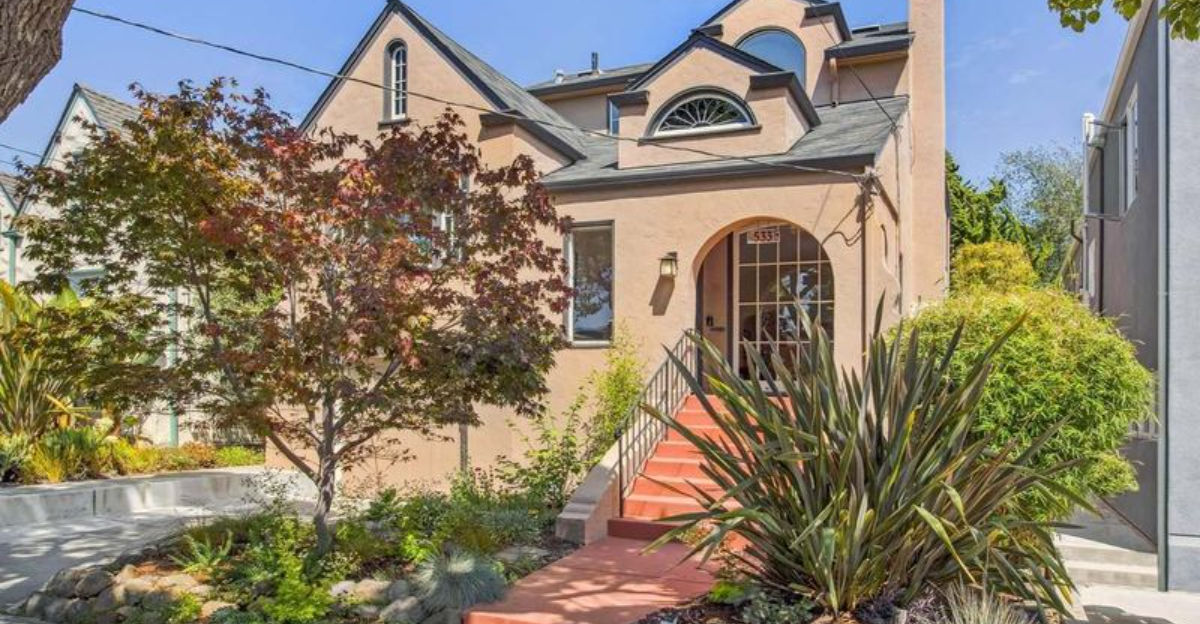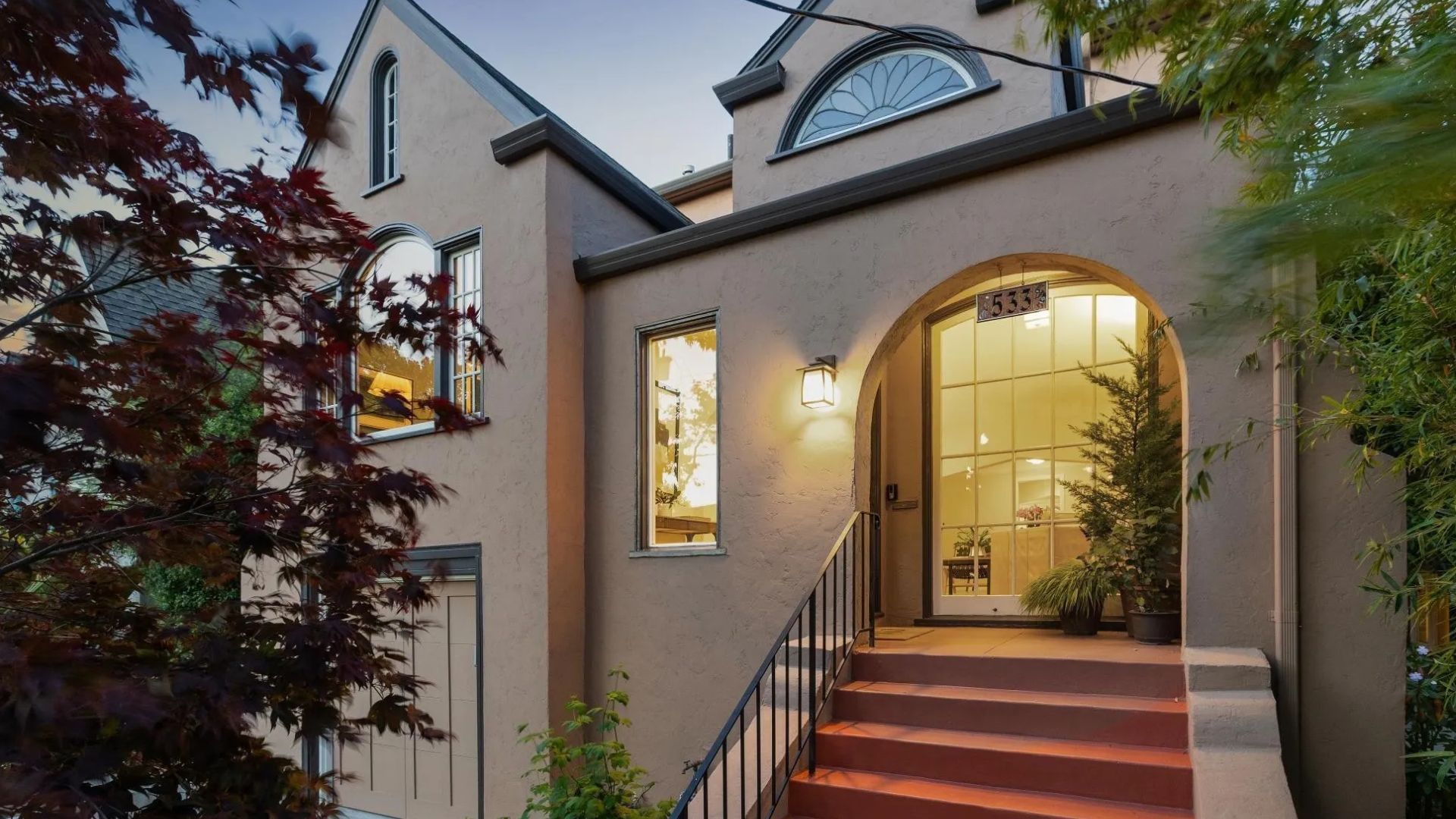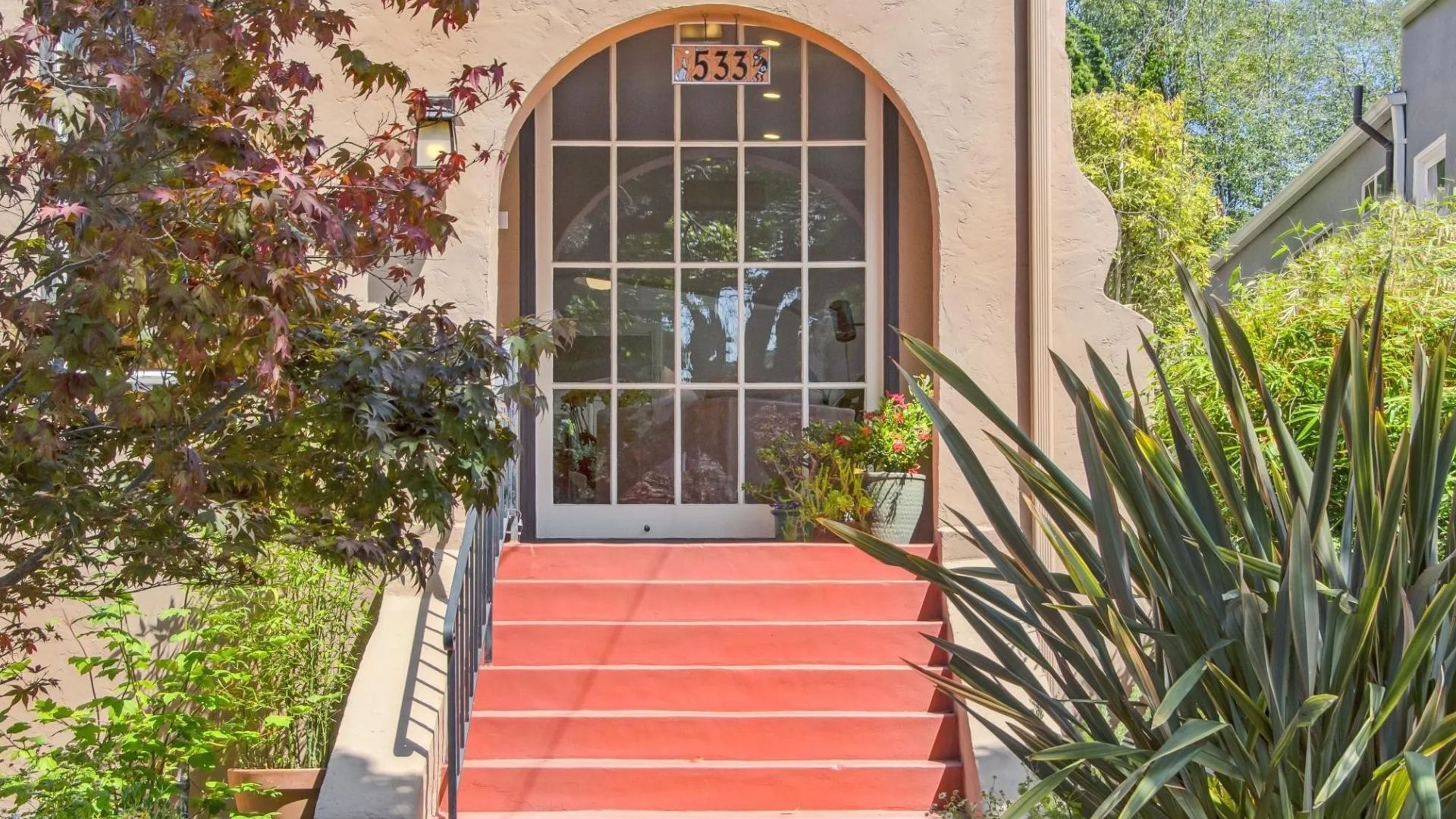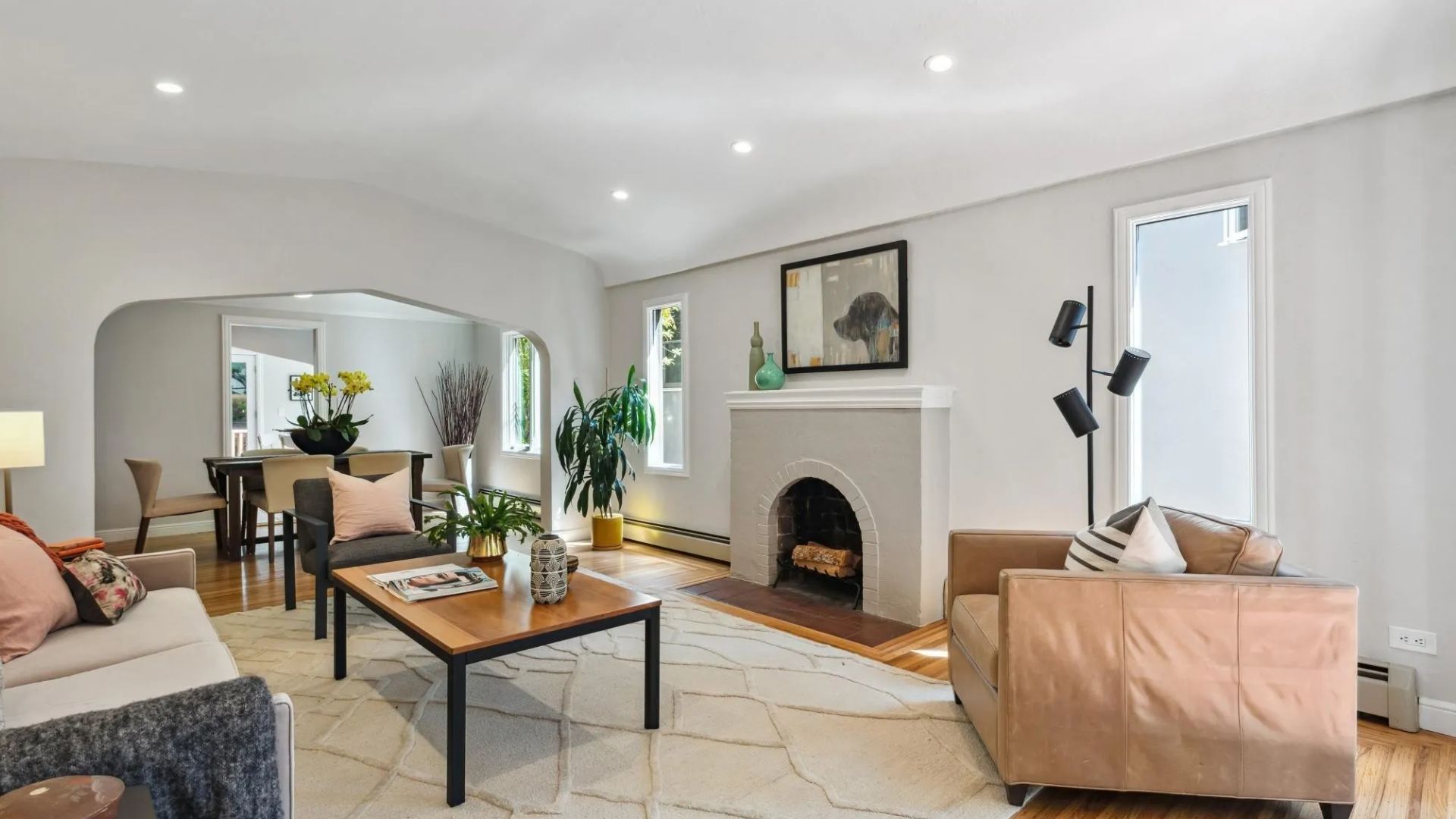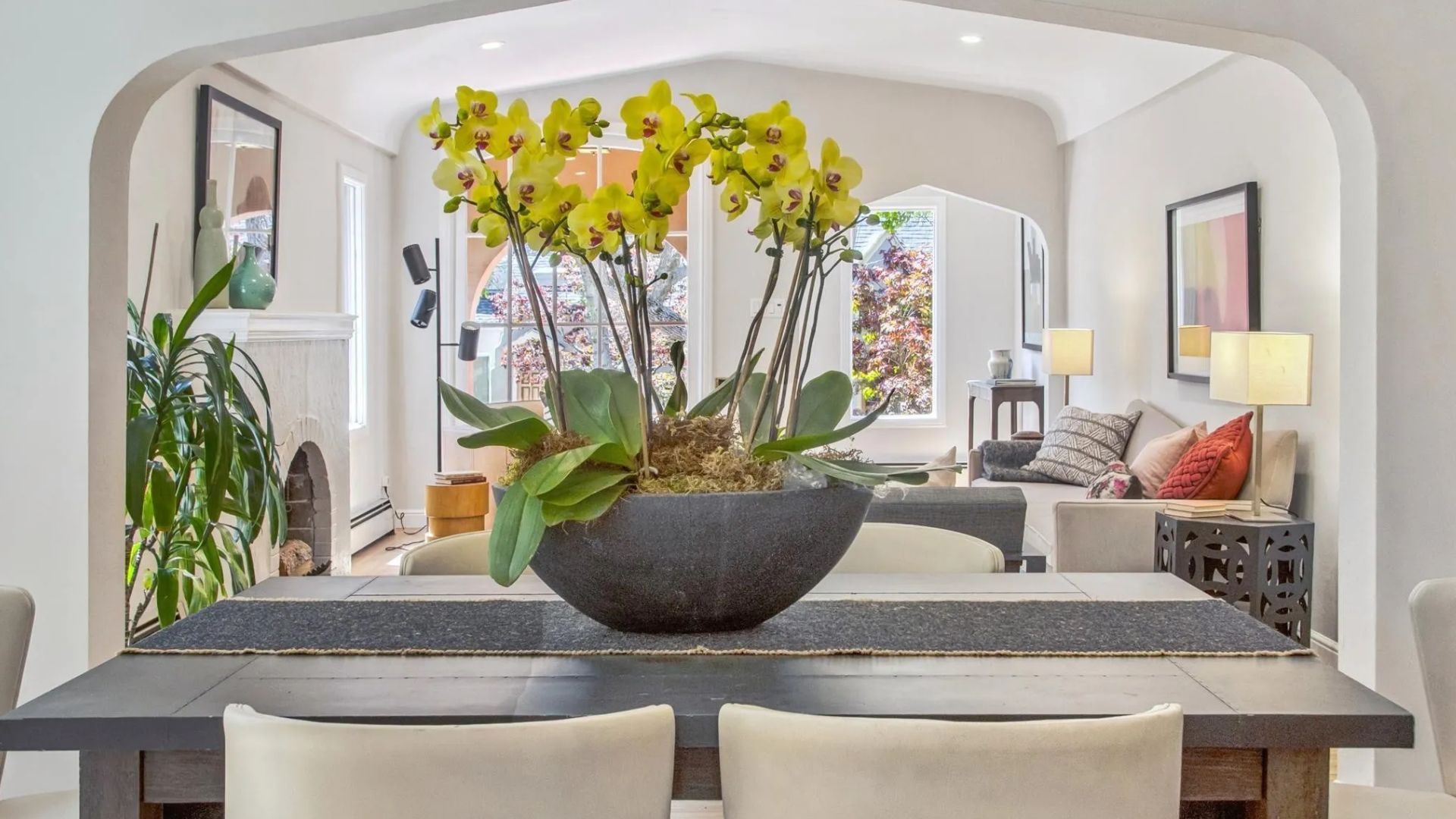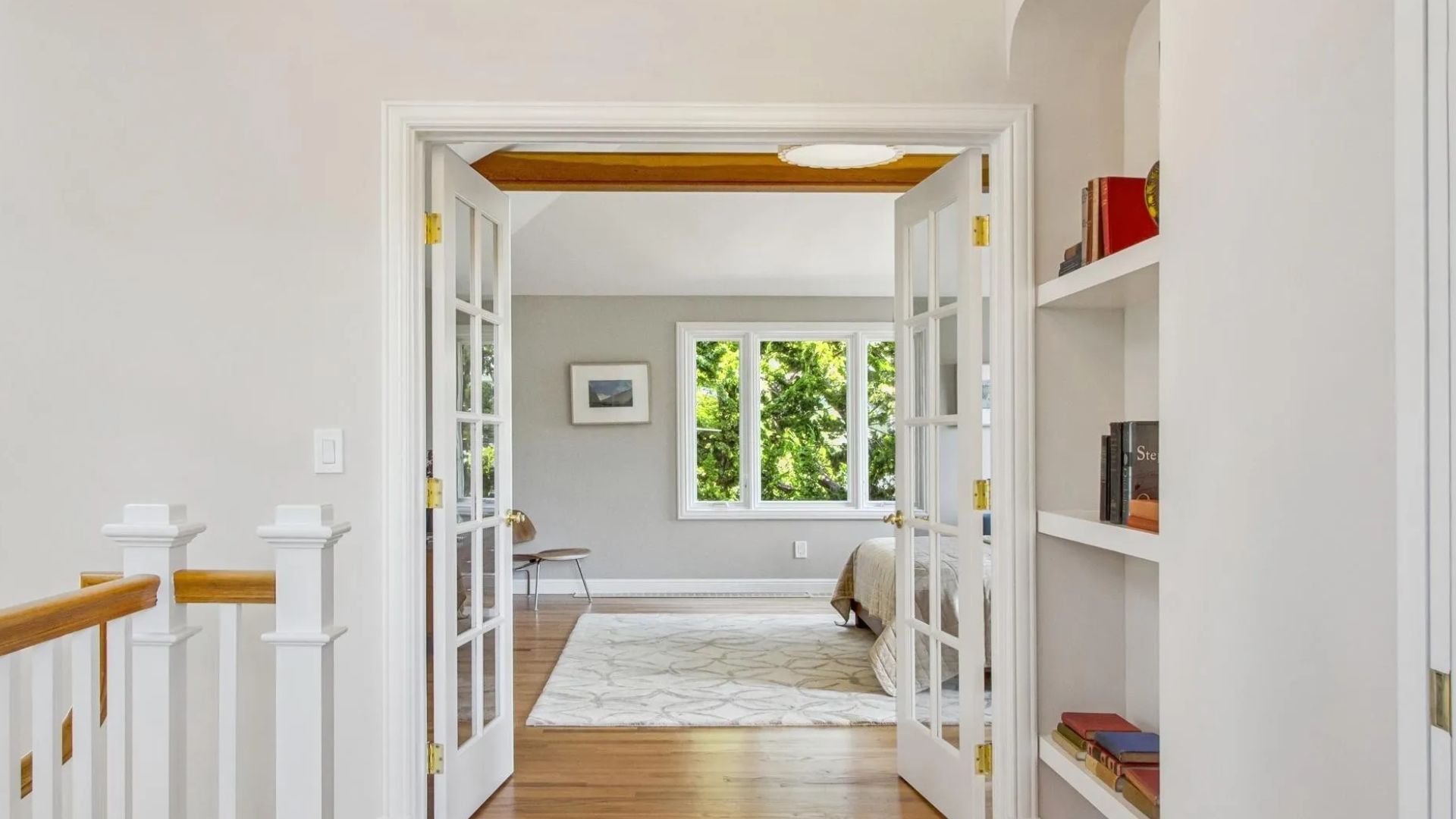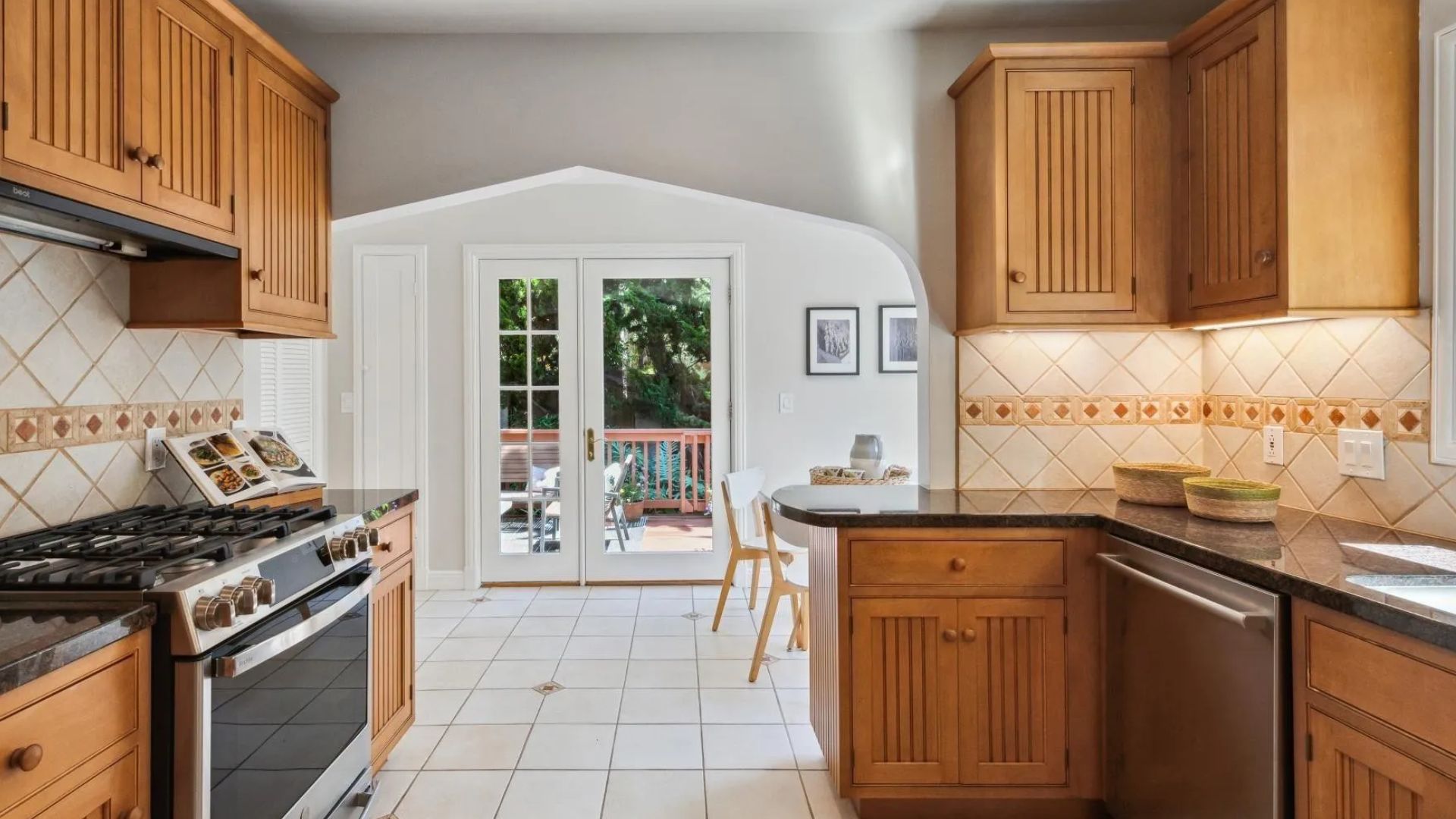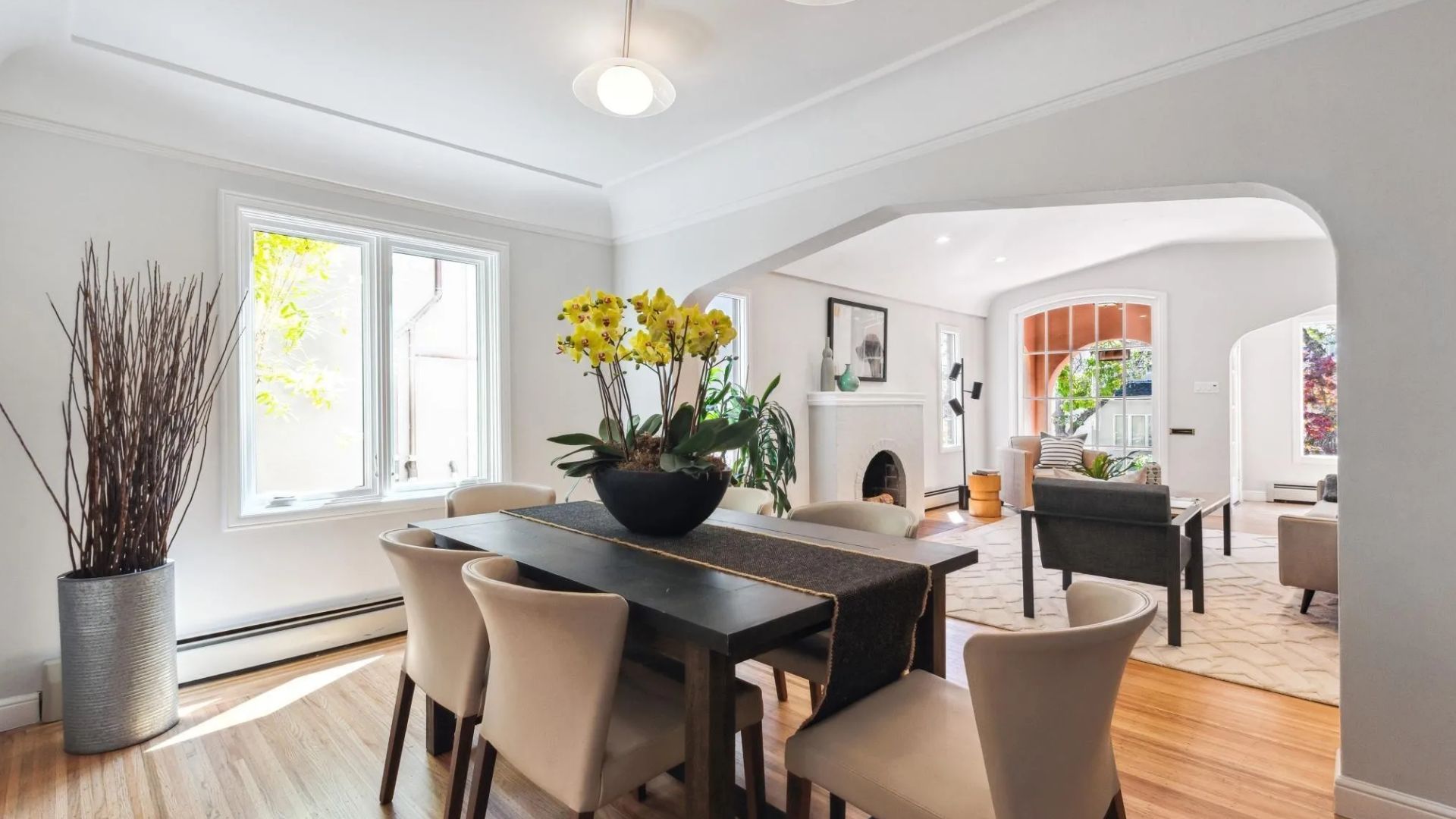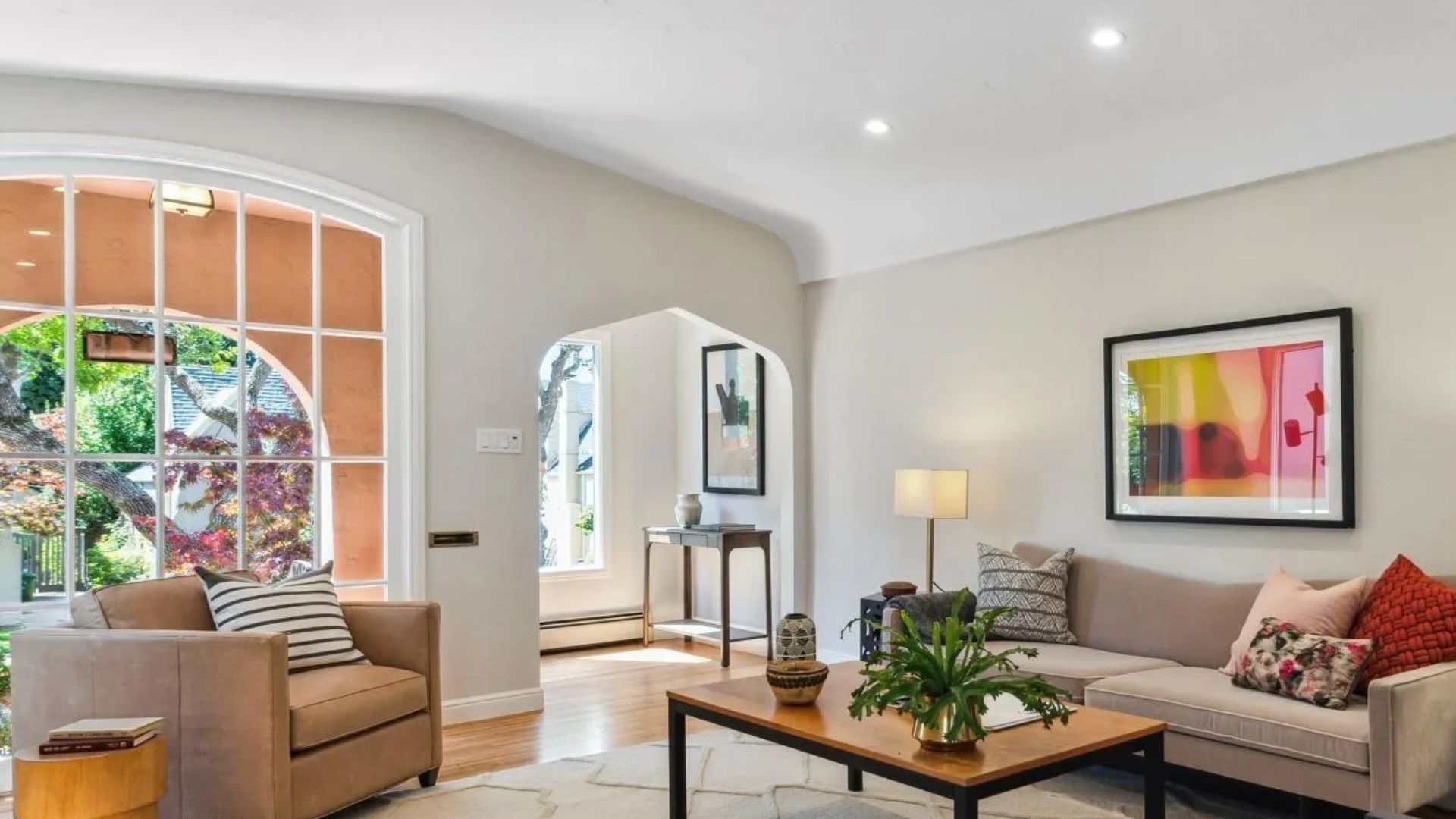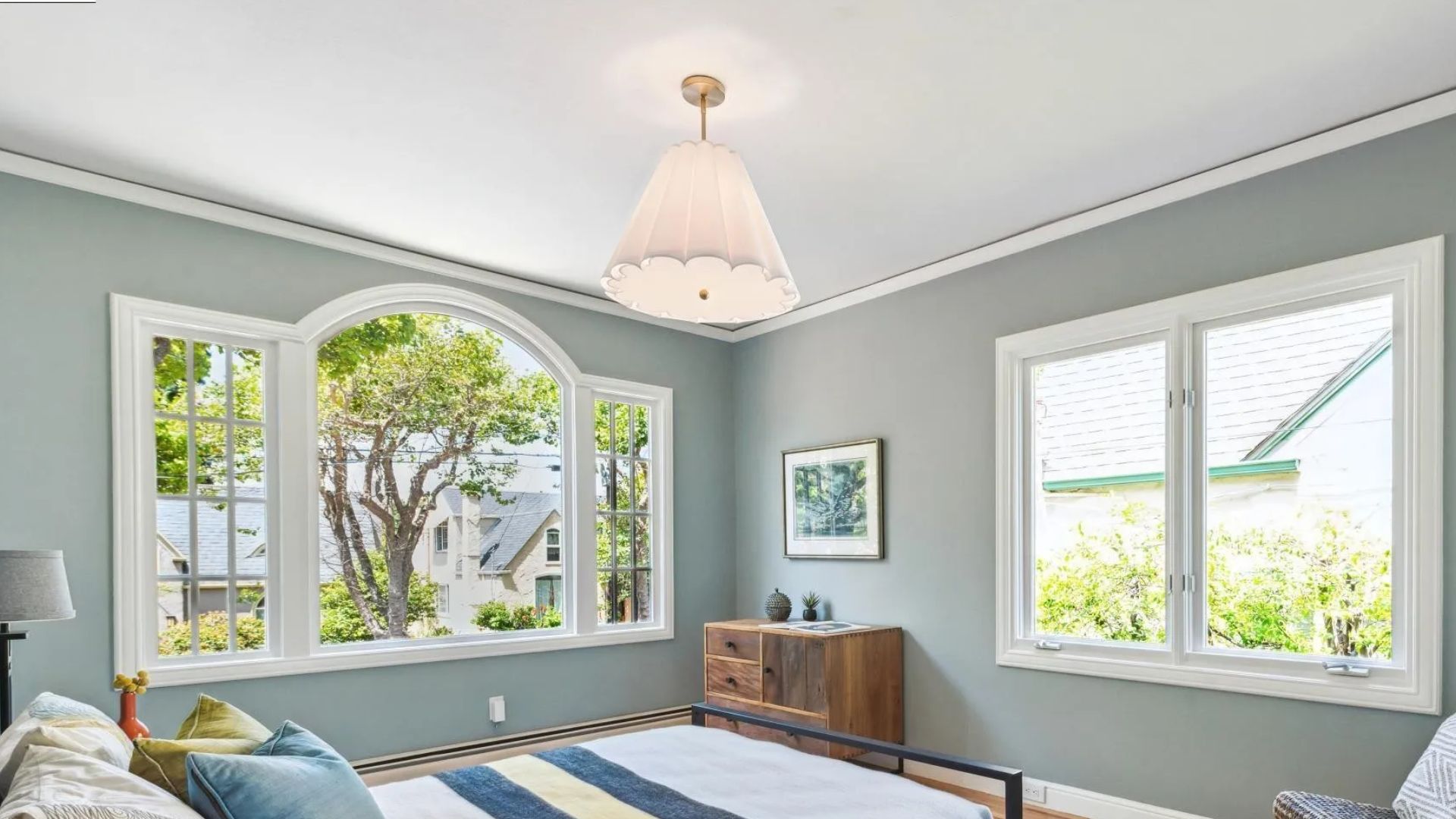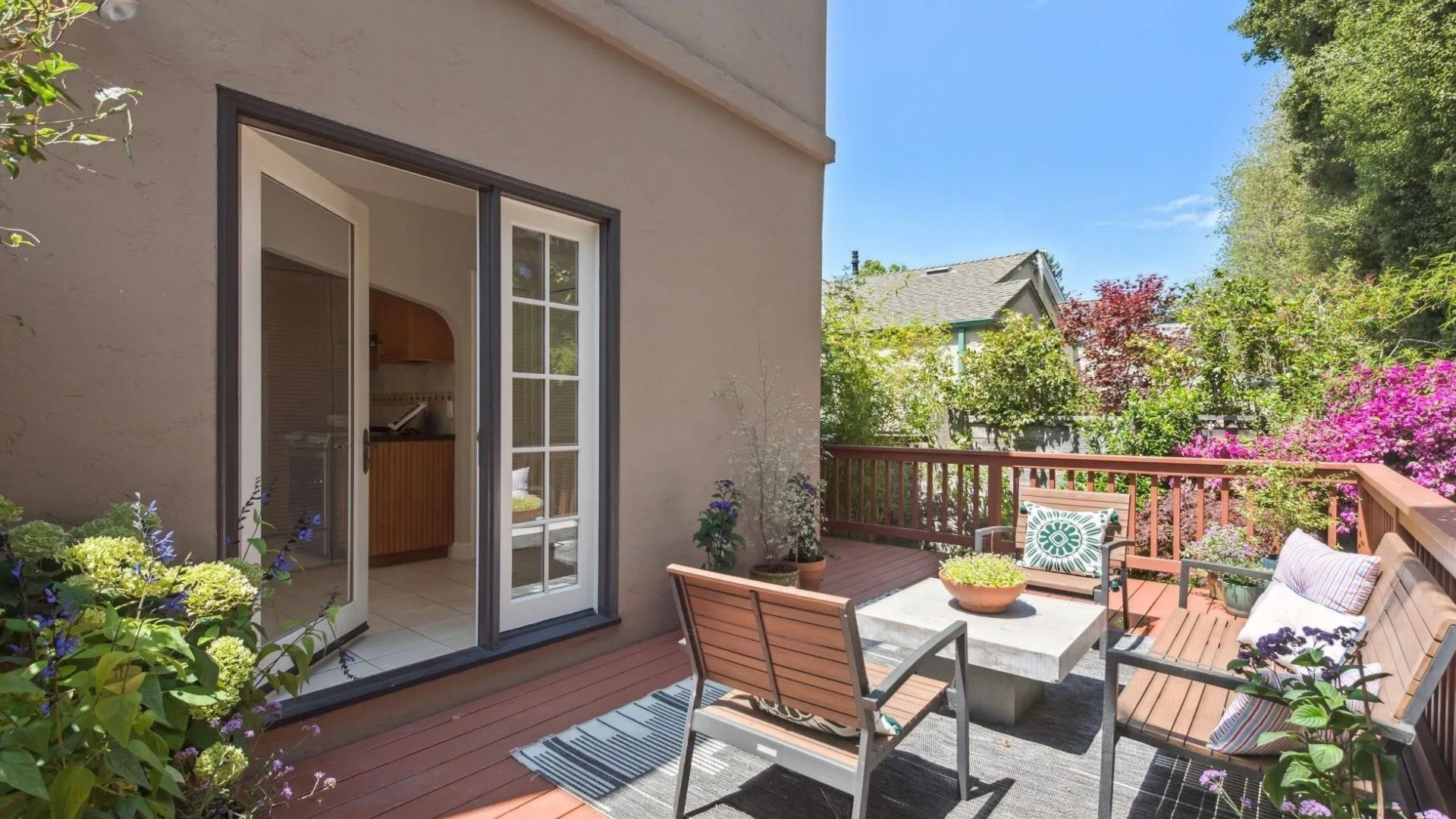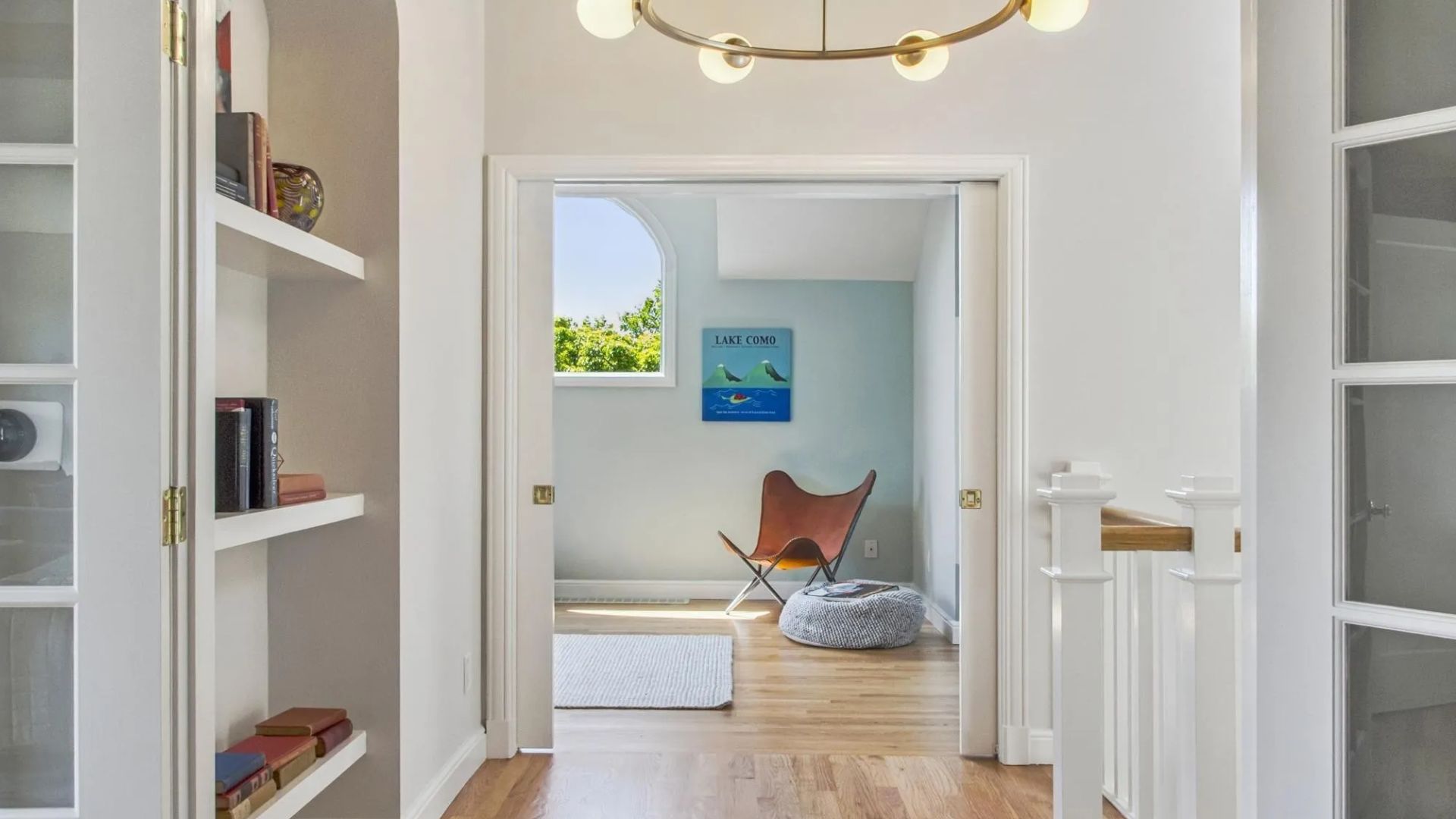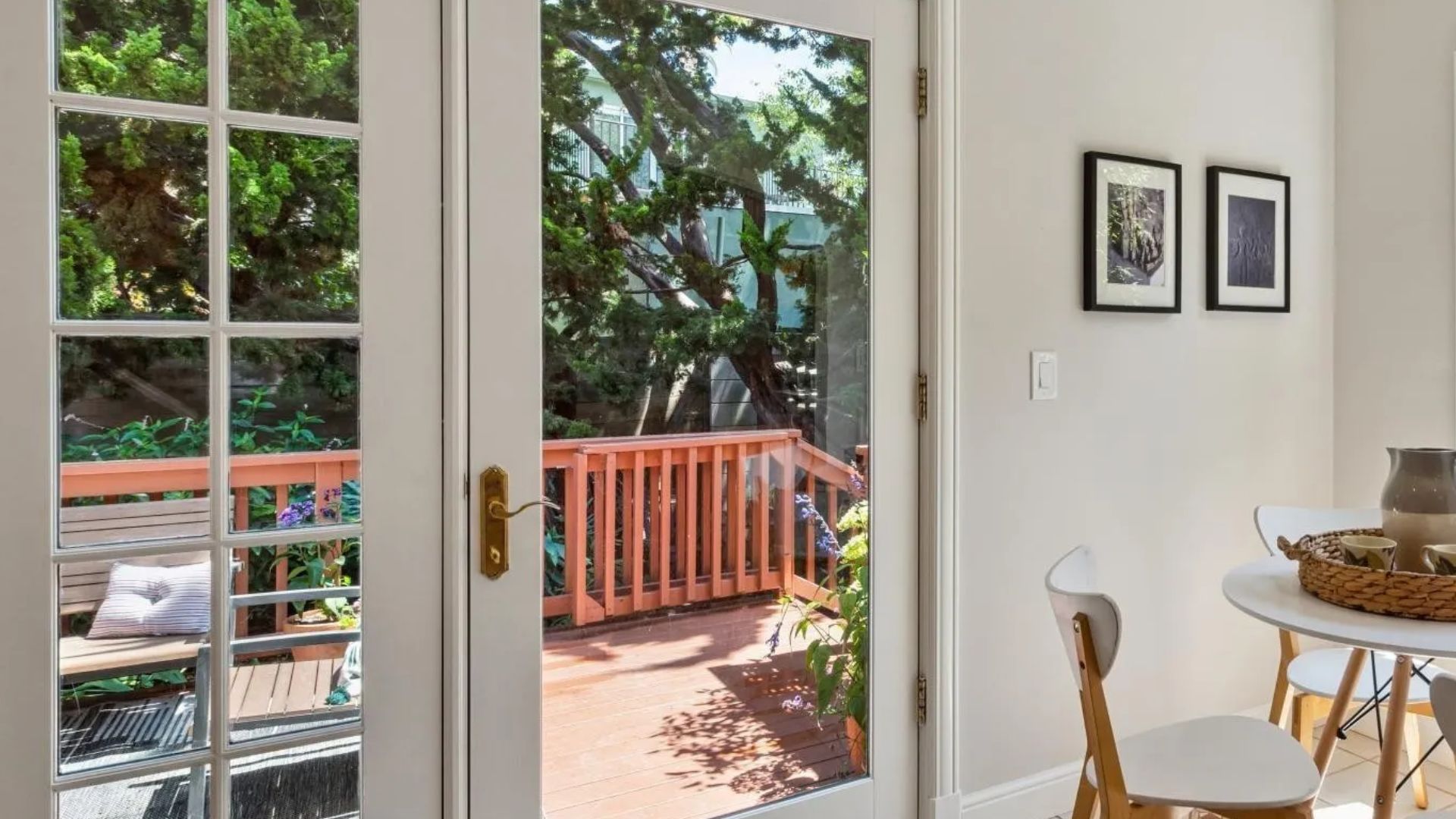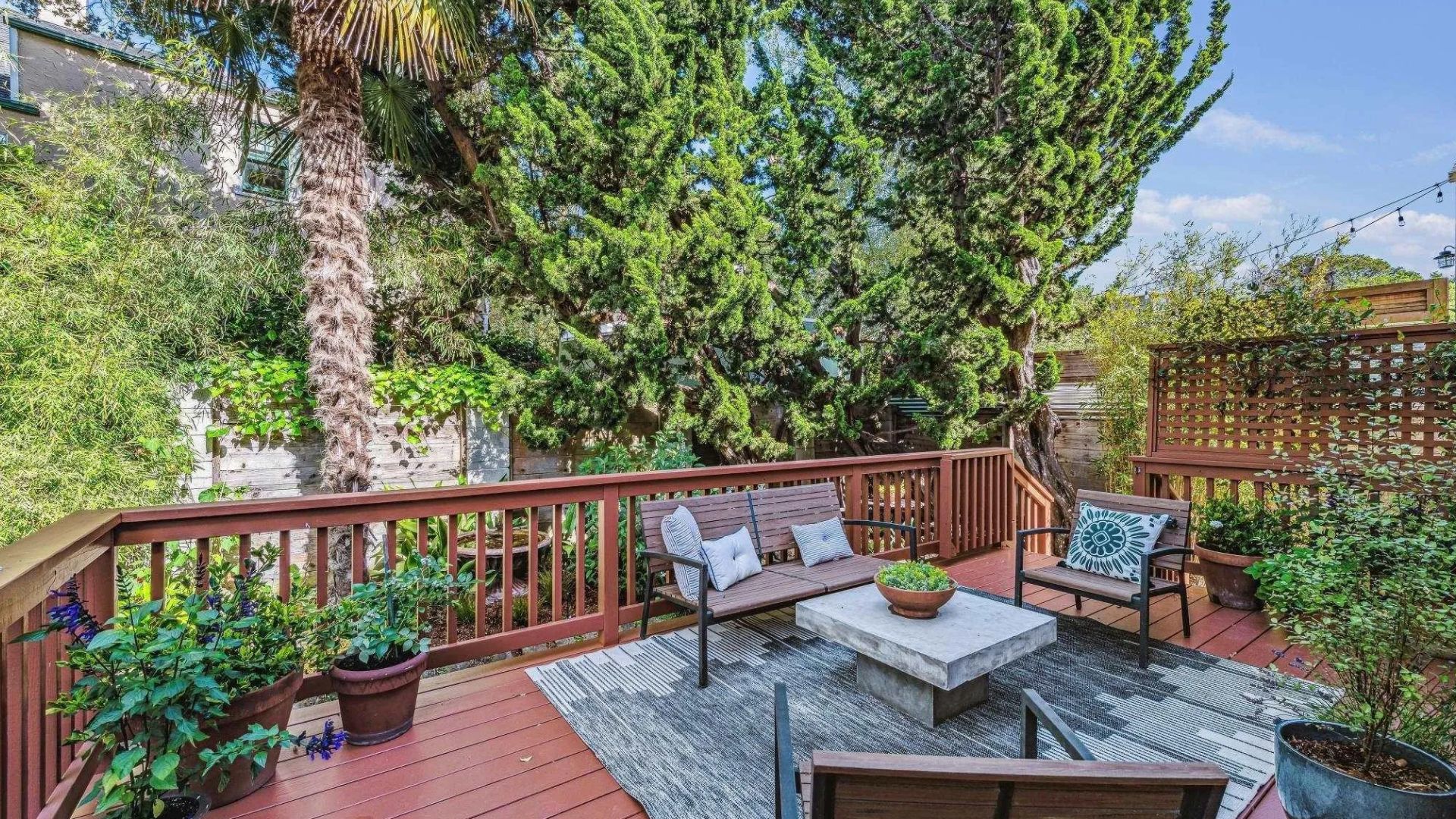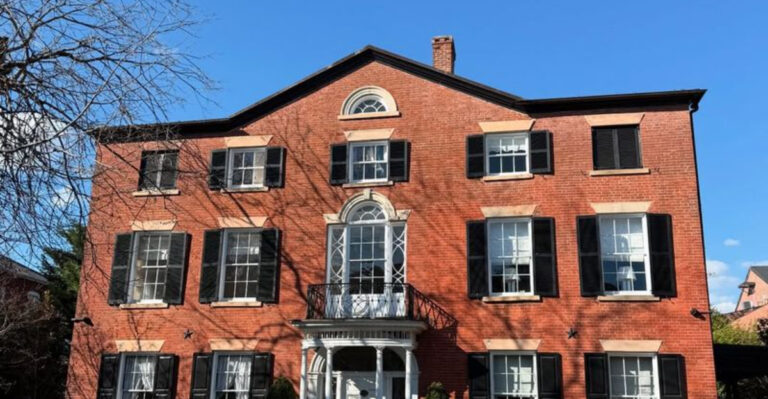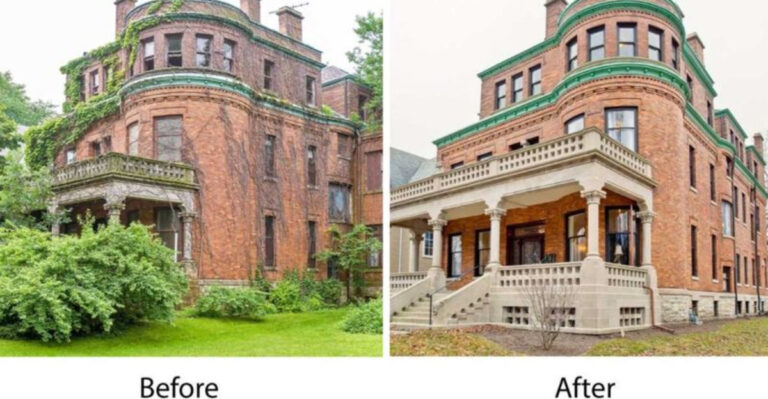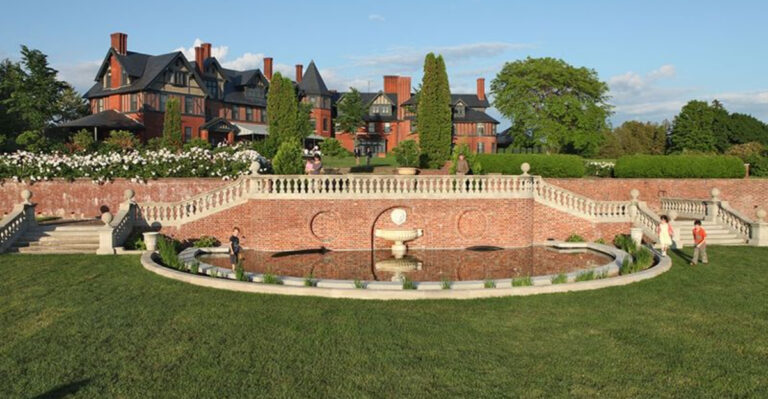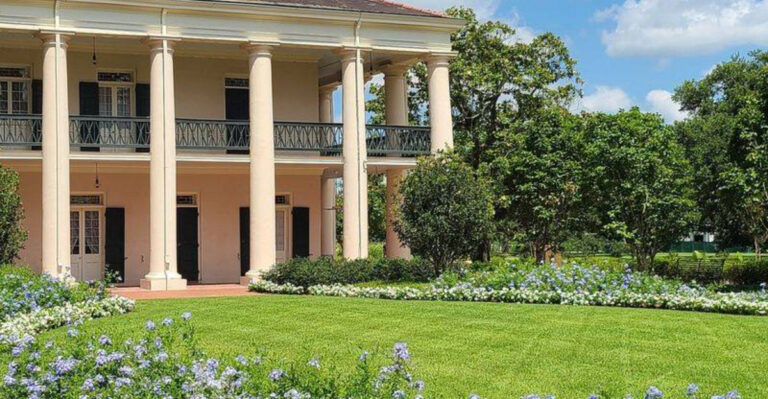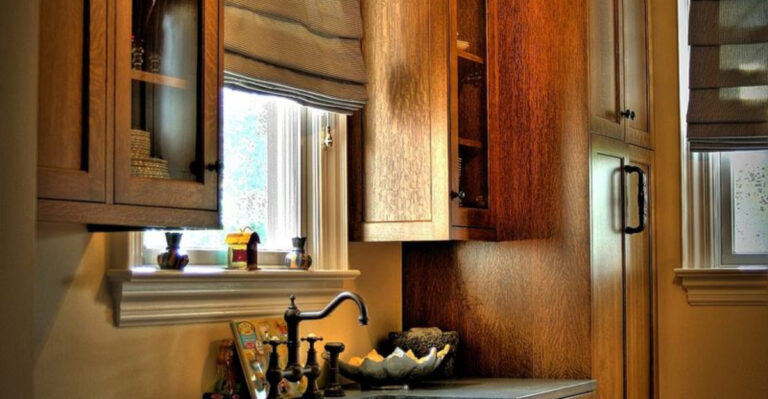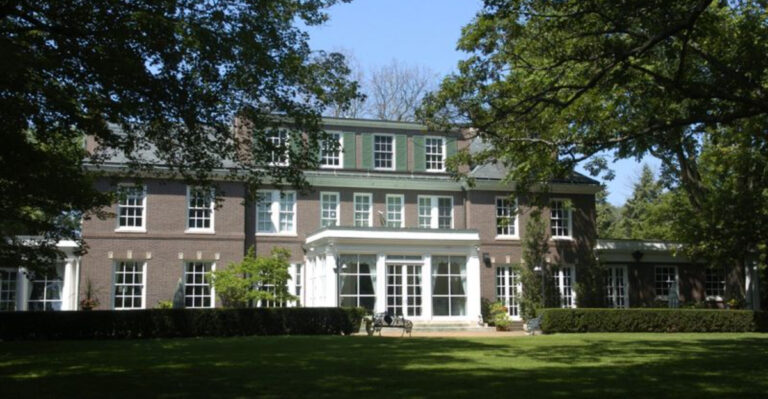15 Photos Of A Vintage 1924 Tudor Home in Berkeley That’s Full Of Charm
Hidden in Berkeley’s tree-lined Northbrae neighborhood sits a jewel of architectural history – a 1924 Tudor home that seems plucked from an English countryside.
Almost a century old, this storybook residence has weathered time with grace, preserving details that modern homes simply can’t replicate. Step inside this living museum where craftsmanship meets cozy comfort in a dance across decades.
1. A Storybook Façade on Neilson Street
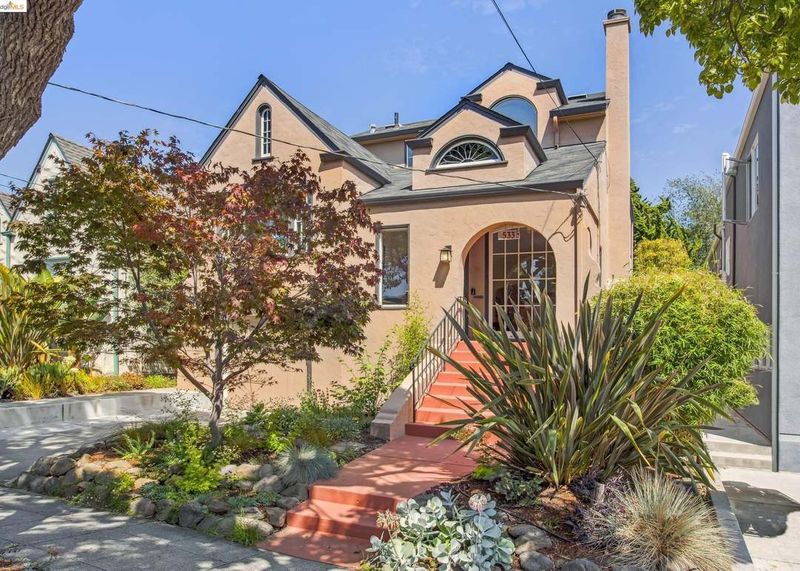
Nestled among mature oaks, the home’s distinctive silhouette stops passersby in their tracks. Decorative half-timbering creates a dramatic contrast against cream stucco walls, a signature Tudor trait that’s survived nearly a century of California sunshine.
The steep-pitched roof sweeps dramatically downward, almost reaching for the ground like something from a fairytale illustration. Berkeley’s architecture has many gems, but few maintain such authentic old-world charm.
2. Steep Gables, Still Standing Proud
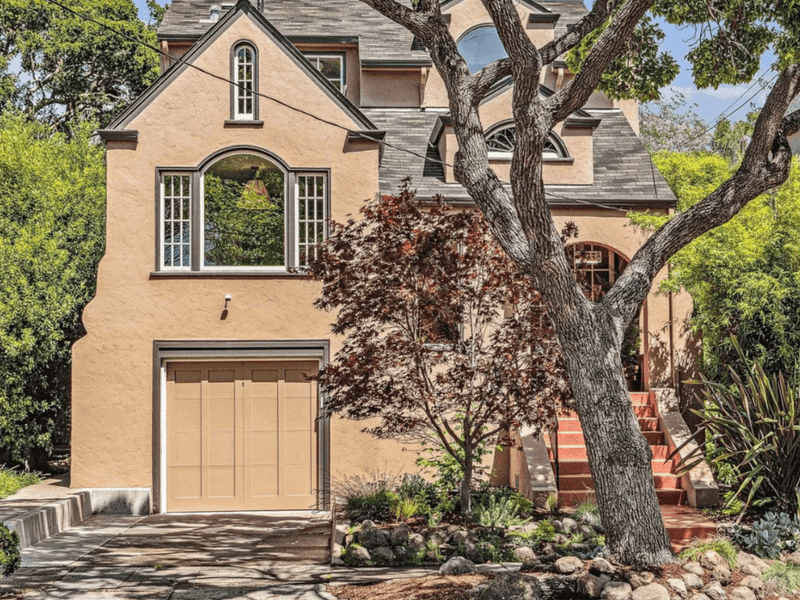
Morning light catches the sharp angles of multiple gables that define this home’s distinctive profile. These aren’t merely decorative – they’re architectural signatures of the Tudor revival movement that swept across America in the 1920s.
Original cedar shingles have darkened with age, creating a textural tapestry across the roofline. Each peak and valley tells a story of craftsmanship that has withstood earthquakes, storms, and the relentless march of time.
3. Diamond-Paned Windows Like Jewelry for the House
Like facets of antique gemstones, the diamond-paned windows catch light differently throughout the day. Each small leaded glass panel was hand-assembled – a craft rarely practiced in modern construction.
When sunlight streams through these windows, it casts geometric shadows across oak floors inside. Original brass latches still secure these windows, their patina deepened by thousands of touches over decades of seasonal openings and closings.
4. An Arched Oak Door That’s Seen a Century of Greetings
Substantial and imposing, the front door curves at its top into a perfect arch – a silent guardian between outside world and private sanctuary. Its aged oak has darkened to a rich chocolate hue that no stain could ever replicate.
Hand-forged iron hinges and a heavy knocker speak to an era when doors were built to last generations. The slight unevenness where wood has expanded and contracted through countless seasons only adds to its undeniable character.
5. Living Room Fireplace Framed by 1920s Craftsmanship
Heart of the home in both placement and spirit, the fireplace commands attention with its hand-laid brick surround and sturdy oak mantel. Darkened slightly by decades of gentle use, the hearth bears witness to family gatherings spanning multiple generations.
Flanking built-in bookcases showcase the seamless integration of storage and architecture typical of 1920s design philosophy. The proportions feel just right – grand enough for presence but scaled for human comfort.
6. Coved Ceilings That Whisper ‘They Don’t Build Like This Anymore’
Graceful curves where walls meet ceiling create a visual softness throughout the home’s formal spaces. These aren’t simple crown moldings but architectural features requiring skilled plasterers – craftsmen whose techniques have largely faded from modern construction.
Small imperfections reveal the human hand behind their creation. When evening light washes across these surfaces, subtle shadows emphasize their gentle undulation – a quiet reminder of artisanship that valued beauty in everyday spaces.
7. Built-In Bookshelves That Beg for Hardcovers
Quarter-sawn oak shelving with the unmistakable tiger-stripe grain pattern frames the dining room entrance. Unlike today’s prefabricated units, these shelves were built specifically for this space, with proportions that perfectly balance the room’s dimensions.
Small drawer pulls of hammered brass have developed a living patina – evidence of countless hands seeking playing cards, photo albums, or favorite novels. The shelves themselves have slight dips where beloved books have rested for decades.
8. A Breakfast Nook You’d Write Postcards In
Morning light floods this intimate corner where countless family breakfasts have unfolded. The built-in bench seating, upholstered in period-appropriate fabric, hugs a vintage oak table that’s witnessed everything from homework sessions to holiday card writing.
A small leaded glass window offers glimpses of the garden while providing the perfect backdrop for morning coffee contemplation. The worn edges of the bench speak to generations of elbows and conversations – comfort earned through decades of faithful service.
9. Hardwood Floors That Glow Like Honey
Narrow oak planks – a hallmark of 1920s construction – create a warm foundation throughout the home. Each board measures just 2¼ inches wide, a detail that required more labor but created floors of exceptional stability and beauty.
A century of footsteps has burnished these floors to a warm amber glow impossible to reproduce with modern finishes. Near windows, subtle fading tells the story of California sunshine streaming in season after season, creating natural patina no designer could plan.
10. Arched Doorways, Each a Little Portal
Architectural poetry flows through the home via gracefully curved doorways connecting primary living spaces. Each arch represents hours of careful framing and plastering by craftsmen working without modern shortcuts.
Unlike today’s standard rectangular passages, these openings guide movement through the home with gentle intention. Standing beneath one, you can almost feel the deliberate transition from one space to another – architectural punctuation that modern homes rarely attempt.
11. 1920s Light Fixtures Still Casting a Glow
Hanging from the dining room ceiling, an original hammered brass chandelier with amber glass shades casts a warm glow that flatters both food and faces. Its hand-wrought details include delicate leaf motifs typical of the Arts and Crafts influence on 1920s lighting.
Wall sconces throughout feature similar craftsmanship, their metal darkened naturally over decades. The soft, ambient light they produce creates an atmosphere no modern fixture could replicate – gentle illumination from a more elegant era.
12. French Doors to a Garden That’s Hosted Dozens of Spring Teas
Connecting indoor living to outdoor pleasure, these multi-paned French doors stand as elegant sentinels between dining room and garden patio. Each small glass panel catches light differently, creating a mosaic effect as sunshine filters through.
The original brass hardware has developed character only time can bestow. When both doors swing open, the threshold between house and garden disappears, creating the seamless indoor-outdoor flow Californians cherished long before it became architectural fashion.
13. A Hallway Full of Quiet Character
Neither grand nor showy, this passage between bedrooms embodies the understated elegance of 1920s residential architecture. A runner of vintage carpet softens footsteps along oak floors that have supported three generations of midnight wanderings.
Built-in linen storage, designed with the thoughtfulness typical of
pre-war homes, provides both function and visual rhythm. The hallway’s proportions feel exactly right – wide enough for comfort but narrow enough to feel cozy rather than institutional.
14. Original Hardware That Deserves a Close-Up
Door hinges, window latches, cabinet pulls – each metal fitting throughout the home tells a story of craftsmanship. Unlike today’s mass-produced hardware, these pieces were designed to be both functional and beautiful, often hand-finished by skilled metalworkers.
Brass doorknobs have developed rich patinas where countless hands have turned them. Even humble pieces like the bathroom towel bar show attention to detail, with decorative end caps and secure mounting that has withstood decades of daily use.
15. Backyard Views That Make Berkeley Feel Like a Village
From the rear windows, Berkeley’s hills roll gently upward, creating a backdrop that frames the garden in picture-perfect serenity. Mature trees – some likely planted when the home was new – provide dappled shade for afternoon contemplation.
A stone pathway winds through carefully tended beds that blend cottage-garden charm with California native plantings. The University campanile peeks through distant trees, a reminder that while this sanctuary feels removed from urban life, it remains connected to Berkeley’s intellectual heart.

